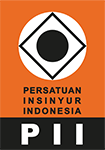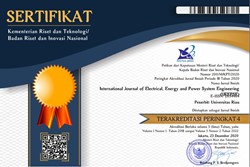IoT Applications in Fermented Tempe Production
Abstract
Tempe is made from fermented soybeans with the fungus Rhizopus Oligosporus. In the manufacture of tempe producers often experience failure. The main cause is the temperature and humidity of the room where the tempe production is not maintained. The absence of supporting devices for detecting temperature and humidity in the factory is an obstacle in the tempe fermentation process. Manufacturers can only estimate the temperature and humidity in the fermentation chamber. If the temperature is considered too hot, tempe producers will come to the factory and open the air vents so that the room temperature returns to normal. To increase tempe production and reduce the risk of production failure, it is necessary to design an automatic control and monitoring tool through the use of the Internet of Things (IoT). The tools used in this research are ESP8266, DHT22, Relay, Power Bank as a power source, fans, and lights. The results obtained from the test are that if the temperature and humidity are above or below the normal temperature (250C-320C), a notification will appear on the user's smartphone via the Blynk application. If the temperature is too hot, the fan will turn on automatically. If the temperature is too cold, the light will turn on. Monitoring data can also be viewed on the things peak website in graphic form.
References
Hanifa, “The Effect of Soybean Type, Ripening Time and Temperature on Protein Content of Soybean Tempe,” FLOREA, 2(2):47-48, 2015.
Wijanarko, Denny. and Soviantul Hasan, “Monitoring Temperature and Humidity Using an SMS Gateway in the Tempe Fermentation Process Automatically Based on a Microcontroller.” Informatika Polinema Journal, 4(1):50, 2017.
Winanti, Ruri, et al, “Hygiene Observation Study of Tempe Products Based on Different Inoculation Methods,” Unnes Journal of life Science, Semarang. ISSN 2252-6277: 40, 2014.
Arafat, “Internet of Things (IoT) Based Home Door Security System with ESP8266, “Scientific Journal of Teknologia Engineering Faculty. 7(4): 264, 2016.
Muzawi, Romedo. Yoyon Efendi, Wirta Agustin, “Web and Mobile Based Light Control System,” SATIN: Science and Information Technology STMIK Amik Riau 4(1): 30, 2018.
Novantari, G.C, “Utilizing the DHT22 Sensor as an Arduino-Based Soil Moisture Detector,” Final Project, Universitas Sumatera Utara:40-41, 2018.
Pratama, Rizki Priya, “ESP8266 Webserver Application for Electrical Equipment Controller,” Journal INVOTEK: Innovation, Vocational, and Technology Malang 17(2): 40, 2017.
Jaya, Ahmad Fauzan, Muhammad Arya Murti and Ratna Mayasari, “Device Monitoring and Control in the Internet of Things (IoT) Based Classrooms,” E-Proceeding of Engineering, Journal Universitas Telkom, 5(1): 22-31., 2018.
Saleh, Muhammad and Munnik Haryanti, “Design and Build a Home Security System Using Relays," Journal of Electrical Technology, Universitas Mercu Buana. 8(3): 181-182, 2017.
Alfanizar, I., and Yusnita, “Design and manufacture of Home Electricity Based Appliances OK Appliance Controller Based on Internet of Things,” JOM FTEKNIK 5(1):2, 2018.
Rizaldi, Aldi and Purwanto, “Design and Build a Temperature and Humidity Controller in the Tempe Fermentation Process Using a Proportional Microcontroller,” National Seminar on Electrical Engineering ISBN: 978-602 8692. .2018.
Vandra Diza.Zulhelmi, Mohd Syaryadhi, “Monitoring Temperature and Humidity Using an ATMega328 Microcontroller in the Compost Fertilizer Decomposition Process,” Electrical Engineering Online Journal, 2(3), 2017.
Copyright (c) 2022 Ery Safrianti, Linna Oktaviana Sari, Fitri Wulandari, Feranita

This work is licensed under a Creative Commons Attribution-NonCommercial 4.0 International License.


















